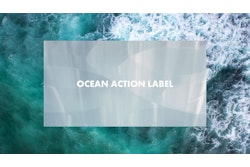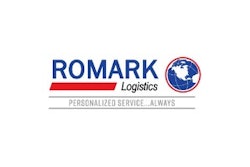Quick hits:
- Dr. Ed Kuffner, chief medical officer at J&J Consumer Health, is an experienced emergency physician and a medical toxicologist who’s witnessed firsthand when children come in for treatment of accidental unsupervised ingestions.
- Parent, caregiver, and clinician burnout is something that designers should be factoring in. When looking into the root causes of accidental ingestions, it’s a continuous journey among patients, healthcare professionals, industry, and consumer groups.
- When new products come onto the market—including THC and supplements—it’s key to understand how consumers interact with the products/packaging.
- Dr. Kuffner offer tips we can all incorporate to prevent kids from accessing medication: be careful where purses and backpacks are placed, ensure meds are placed back in high cabinets after usage as post-use is a particularly risky time, and use dosing devices that come with medications because household tools are inaccurate.
- Blister Package Wins J&J’s Unit Dosing QuickFire Challenge
- Supplements and Personal Care Packaging At Natural Products Expo West 2022
 | Read the transcript below: |
Keren Sookne: I recently interviewed Dr. Ed Kuffner, chief medical officer at Johnson & Johnson Consumer Health. Throughout his career in—including time in the emergency department and poison center—Ed has been passionate about patient safety and has worked with a broad range of internal and external stakeholders to tackle complex public health issues such as preventing medication errors, accidental unsupervised ingestions, misuse, abuse and overdose.
In Part 1, we discussed the winner of their recent QuickFire design challenge in the importance of unit dose packaging, and I’ll link to that video below.
In part 2 today, we delve into design considerations, including caregiver burnout, as well as some of Dr. Kuffner’s tips that we can all heed for helping to prevent accidental unsupervised medication ingestions among children.
Let's jump in.
Keren Sookne: You know, are there new challenges that you feel are coming up in medication errors? I'm just curious, I know that there's a lot in the news about parent, caregiver, or clinician burnout. People are on their phones a lot. We're all fairly distracted, compared to perhaps 10 or 20 years ago. So I'm curious if that's causing issues that designers should be factoring in on the positive side of that. Maybe patients are more educated and knowledgeable.
Dr. Kuffner: I look at preventing medication errors or accidential unsupervised ingestions as this continuous journey, that we're all on together, right? Patients, healthcare professionals, industry, consumer groups all kind of working together. It's one of the reasons I like being a chief medical officer, as it's where I can use my toxicology skills and try to have an impact on on public health. For me, it's always happy to dig deep into what are really the root causes of medication errors and accidents, unsupervised ingestion. And the more we understand the root causes, the more that we can design technologies and implement new packaging and new techniques to try to prevent them from happening.
And so when I think about that, there's areas where I think we always need to push and dig a little bit deeper. When new products come onto the market, let's understand what's going on with those products. When we start expanding into new categories, it's an opportunity to take a step back and really dig deep again, and ask, "Do we really understand what's happening?"
You know, the legalization of THC based products, right, when especially started to formulate them and market them in these appealing food based forms, that's created risks, not just for the users, but for kids when it relates to accidential unsupervised injestions. I think as categories expand, we're seeing expansion in the area of the natural products and supplements. I think there's an opportunity for all of us, right? How do we further refine how these supplements are dosed? Can we put additional measures in place to protect children like adding dosing devices and child resistant packaging—like we have on more traditional over the counter or prescription medicines? Today, I think things like digital tools, right, I think they have the ability to help make dosing much more accurate. How do we better educate patients, consumers caregivers about these things? So with with all these new advances, I'm optimistic that new technologies, digital solutions, they're really going to help us reduce medication errors and reduce accidential unsupervised injestions.
Keren Sookne: You bring up a really good point about the supplements, because they have just traditionally been in these, you know, regular HDPE bottles, you know, not necessarily having any child resistance on them. And just because they're over the counter doesn't mean that they couldn't be dangerous to a kid.
Dr. Kuffner: Absolutely, that we always got to do a risk benefit analysis and, you know, strike the right balance. Maybe I could leave you with a couple of tips.
And so you know, whether you're a packaging engineer, you're a toxicologist, a viewer, a package expert, I always like to say, hey, at the end of the day, there's information that we can communicate to friends, family, and loved ones that help keep all of us—especially kids—safe. And so a couple things I like to say is, you know, make sure you're always reading and following the labeling information on all the products that either you're taking yourself or as a caregiver that you may be given to someone else. This concept of keeping medicines high and out of site of children is really important. But it's not just important when you're storing those medicines. It's really important after each each and every use. And we know that a big risk area is when caregivers who store medicines high and out of sight appropriately, they take them out because somebody in the family may be sick, they start using them, and they don't put them back there. And oftentimes, that's when kids get into them. Never give adult medicines to kids, you know, they have specific pediatric medicines. And when you start giving adult medicines to children, we create increased risk. When it comes to pediatric liquid medicines, I think it's important to reinforce this concept of always using the dosing device that comes with the product, don't use household spoons as they're notoriously inaccurate. And for people who may put their medicines in purses, or handbags, or backpacks, and they leave them on the ground, and they go to a, you know, a household or an environment where maybe young kids, it's relatively common for curious young kids, and we want to be curious to get into them. And so if you're one of those people who're carrying a medicine around, really be hyper aware when you're entering new environments where kids are around.
Sometimes you hear people say, "Oh, I, I didn't want to call the poison line, or I didn't want to call and bother the healthcare professional," I would say as healthcare professionals, we want to hear from patients. Right? And so if you have a question, if you have a concern, you're unsure, reach out and contact a healthcare professional, we're always here to help. And when I say is on top of that, in the United States, here, we have an unbelievable poison center system. And the poison centers are open 24/7 They have health care professionals on the ready to help you. So if you have any questions about yourself or someone you're caring for, call the poison center, they can give fantastic advice and they're happy to do it.
Keren Sookne: Great. Yeah, those are good tips. I mean, we are all ultimately responsible for you know, the health of people around us in terms of at least not exposing children to packages that they shouldn't be around.
Dr. Kuffner: Absolutely. Thank you so much. Very enjoyable talk with you, and I really appreciate it.
Keren Sookne: Likewise, thank you so much and have a great rest of your day.

























